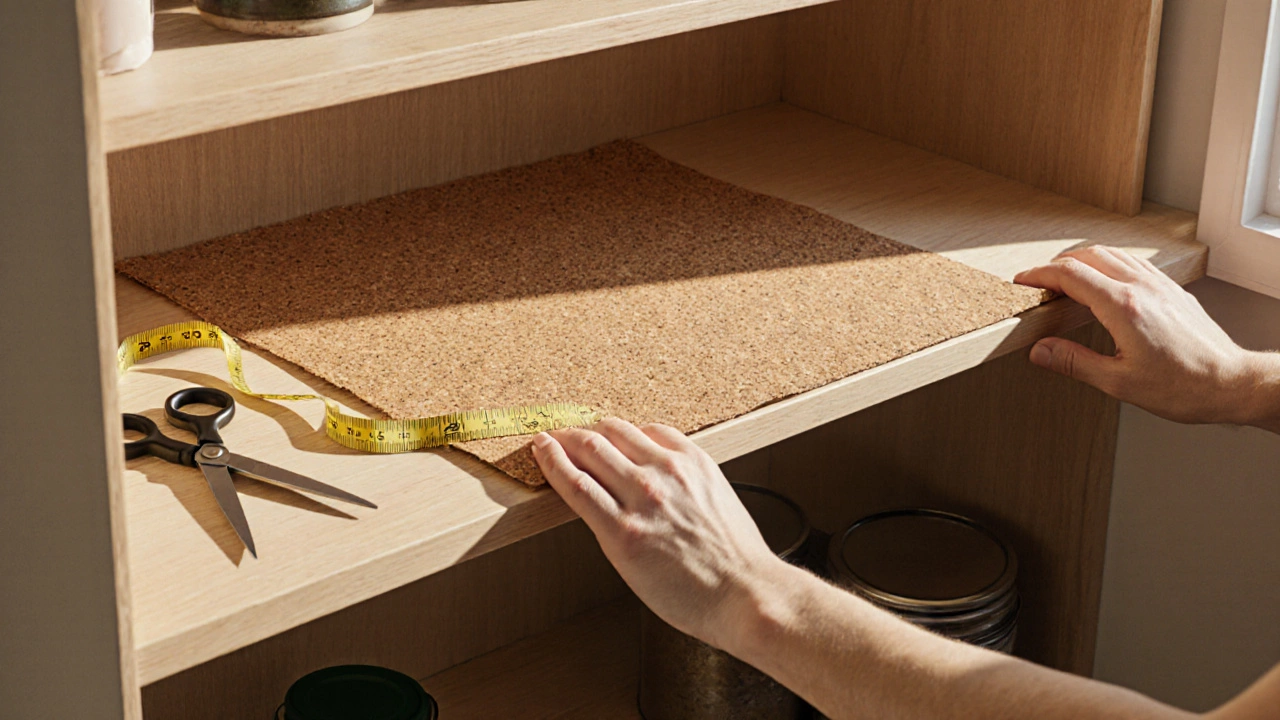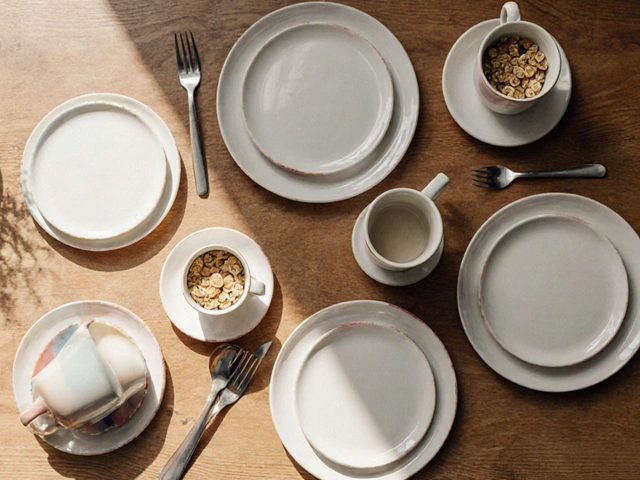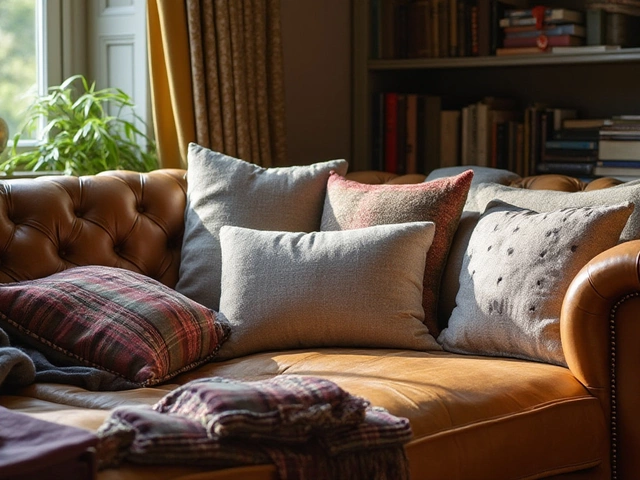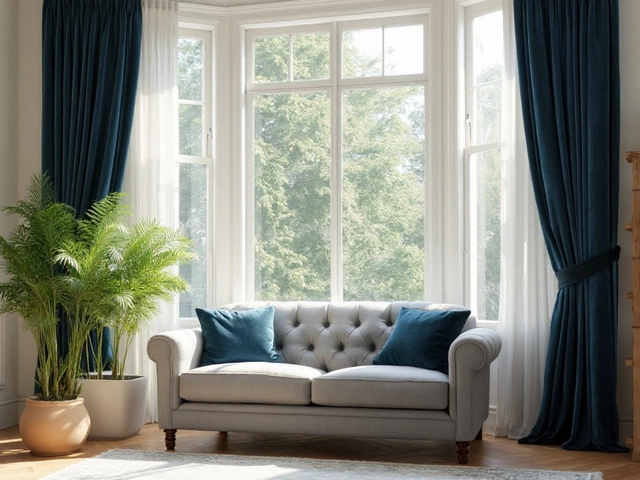Shelf Liner Cost Calculator
Choose Your Project
When you need a cheap, non‑slip surface for pantry shelves, shelf liner is a thin flexible material that protects wood from spills and reduces noise. If you’ve run out, want a greener solution, or simply love a good DIY hack, you’ll be glad to know there are dozens of substitutes sitting in your toolbox. Below you’ll find practical, budget‑friendly ideas that work for kitchen cabinets, bathroom shelves, garage storage, and even closet organizers.
Key Takeaways
- Common household items-cork, silicone baking mats, fabric, and contact paper-make excellent shelf‑liner replacements.
- Most alternatives cost less than $1 per square foot and are easy to cut with scissors.
- Choose water‑resistant options (like vinyl or silicone) for damp areas, and softer fabrics for delicate items.
- Installation generally requires only cleaning, measuring, and a little pressure to adhere.
- Regular cleaning with mild soap keeps the substitutes looking fresh for years.
Why Consider a Substitute?
Traditional shelf liners can be pricey, and the rolls often contain PVC or chemicals you might want to avoid. Additionally, a one‑size‑fits‑all liner may not suit every shelf shape-think rounded edges, uneven corners, or metal racks. Using a different material lets you match the shelf’s purpose: waterproof for bathroom cabinets, soft for glass shelves, or extra grip for garage tool racks.
Cork Sheet
Cork sheet is a natural, renewable material harvested from bark. It’s lightweight, water‑resistant, and offers a cushy feel that protects delicate glassware. A typical 12‑inch by 12‑inch cork square costs about NZ$2.50, making it cheaper than premium vinyl liners. Cut with a utility knife, then press onto the shelf; the slight texture keeps items from sliding.
Silicone Baking Mat
Silicone baking mat is a heat‑resistant, non‑stick sheet used in ovens. Because it tolerates temperatures up to 260°C and repels water, it works wonders in pantry shelves that hold canned goods or in laundry closets where moisture is a concern. A standard 12‑inch mat retails for NZ$8, but you can often cut it into smaller pieces for multiple shelves.
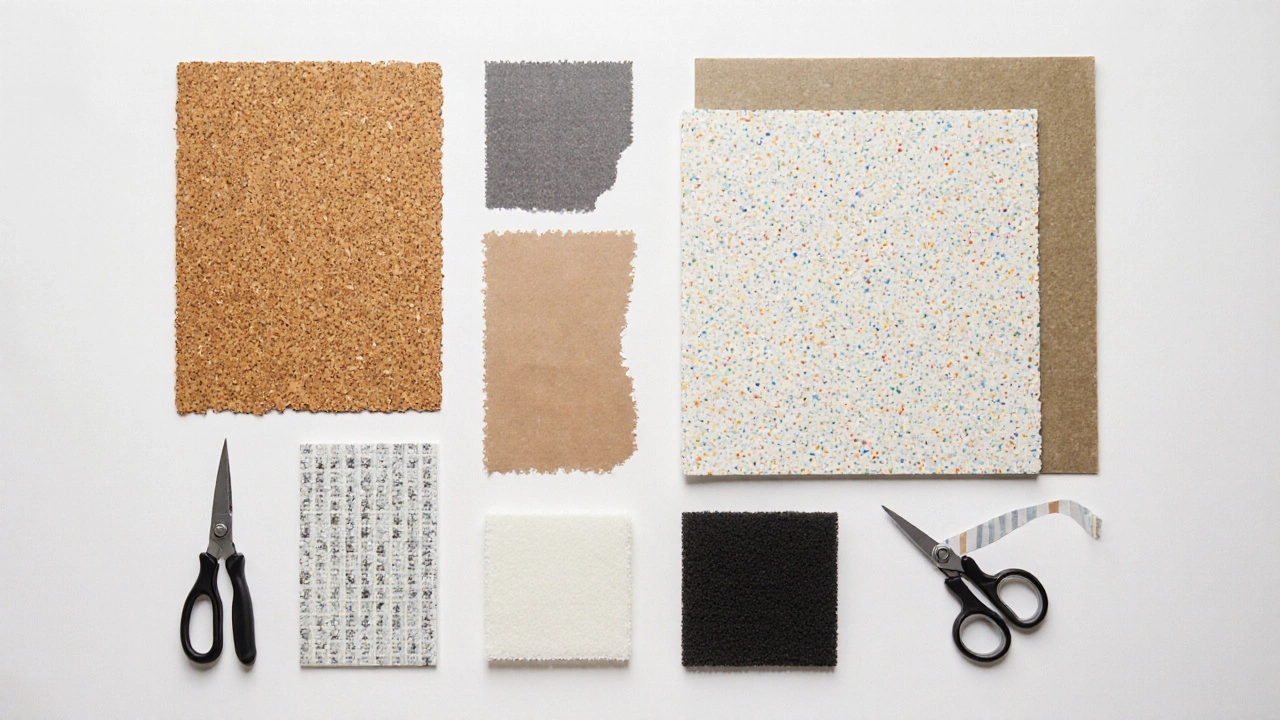
Fabric Liner (Canvas or Muslin)
Fabric liner such as canvas, muslin, or old t‑shirts gives a soft, slip‑free surface and adds a pop of color. Choose 100% cotton for easy washing. An old tea‑towel can be folded and stapled or glued for a quick fix. Fabric costs range from NZ$0.60 for a recycled tee to NZ$3 for a new canvas square.
Contact Paper
Contact paper is a self‑adhesive vinyl sheet designed for cabinets and walls. It comes in countless patterns, so you can match your décor while protecting surfaces. The adhesive backs stick to smooth shelves without extra glue. A roll of 10ft×15in costs around NZ$12, yielding plenty of material for a whole kitchen.
Vinyl Floor Tile
Vinyl floor tile is a rugged, waterproof flooring square usually sold in 12‑inch or 16‑inch formats. Because it’s designed to handle foot traffic, it’s tougher than most liners and can be glued or simply laid in place. A single tile averages NZ$2.20, making it a durable budget option.
Rubber Mat (Gym or Anti‑Fatigue)
Rubber mat is a dense, slip‑resistant sheet made from recycled tires. It’s perfect for garage shelves where heavy tools could dent wood. A 12‑inch by 12‑inch piece costs roughly NZ$3.5 and can be cut with scissors. Its thick texture also reduces noise when items are moved.
Felt Pad
Felt pad is a soft, compressible material often sold as furniture protectors. Use it under glass jars or delicate collectibles to prevent scratches. Felt is cheap-about NZ$0.80 per square foot-and can be glued with a spray adhesive for a seamless finish.
Quick Comparison of Top Alternatives
| Material | Typical Cost (NZ$ per ft²) | Durability | Water Resistance | Best For |
|---|---|---|---|---|
| Cork Sheet | 0.20 | Medium | High | Pantry, Glassware |
| Silicone Baking Mat | 0.70 | High | Very High | Wet areas, Hot items |
| Fabric (Canvas) | 0.25 | Low‑Medium | Low | Decorative shelves |
| Contact Paper | 0.30 | Medium | Medium | Styled cabinets |
| Vinyl Floor Tile | 0.18 | High | Very High | Garage, Utility rooms |
| Rubber Mat | 0.30 | High | Medium | Heavy tools |
| Felt Pad | 0.10 | Low | Low | Delicate items |
How to Install Any Substitute
- Clean the shelf thoroughly with warm, soapy water; let it dry fully.
- Measure the shelf length and width. Add a ½‑inch buffer for a snug fit.
- Cut the chosen material using scissors, a craft knife, or a utility blade. For vinyl tile or rubber, a straight edge helps.
- If the material is self‑adhesive (contact paper, some vinyl), peel back a corner, align, and press firmly. For non‑adhesive options (cork, fabric, silicone), use a thin layer of spray adhesive or double‑sided tape.
- Smooth out air bubbles with a credit card or a roller. Trim excess edges with a razor.
- Step back, test with a few items, and adjust if needed.
Cleaning & Maintenance Tips
Most substitutes are low‑maintenance:
- Cork, felt and fabric can be spot‑cleaned with a damp cloth; air‑dry before re‑loading shelves.
- Silicone mats and vinyl tiles are dishwasher‑safe or can be wiped with a mild degreaser.
- Rubber mats may develop a slight odor over time-lightly sprinkle baking soda, let sit 30minutes, then vacuum.
- Contact paper benefits from occasional re‑sealing with a clear spray to keep edges from peeling.
Pros & Cons at a Glance
| Alternative | Pros | Cons |
|---|---|---|
| Cork | Eco‑friendly, soft, water‑resistant | Can compress under heavy weight |
| Silicone | Heat & water proof, very durable | Higher upfront cost |
| Fabric | Customizable, cheap | Absorbs spills, needs washing |
| Contact Paper | Stylistic variety, easy stick | Can bubble, adhesive may leave residue |
| Vinyl Tile | Extremely tough, waterproof | Harder to cut precisely |
| Rubber Mat | Excellent grip, protects against dents | Thicker, may reduce shelf space |
| Felt Pad | Gentle on delicate items | Low water resistance |
Frequently Asked Questions
Can I use regular carpet as a shelf liner?
Carpet works for decorative shelves but isn’t water‑resistant. If you store items that may leak, choose a rubber or silicone option instead.
Is contact paper safe for food storage areas?
Most contact papers are food‑grade PVC‑free, but double‑check the label. For direct contact with food, silicone mats or cork are safer choices.
How do I prevent the liner from sliding on metal shelves?
Add a thin double‑sided tape strip along the back edge before laying the material. Rubber mats or silicone provide natural grip without extra tape.
Can I recycle the leftover material after cutting?
Yes-cork, silicone, and rubber are commonly accepted at curbside recycling in NZ. Fabric can be donated or composted if it’s natural fiber.
Which option lasts the longest in a high‑humidity bathroom?
Silicone baking mats and vinyl floor tiles outperform others because they are fully waterproof and resist mold growth.
Whether you’re short on cash, chasing a greener home, or just love a good craft project, these shelf liner alternatives give you flexibility without compromising protection. Pick the material that matches your shelf’s environment, cut to size, and you’ll have a tidy, slip‑free surface in minutes.

